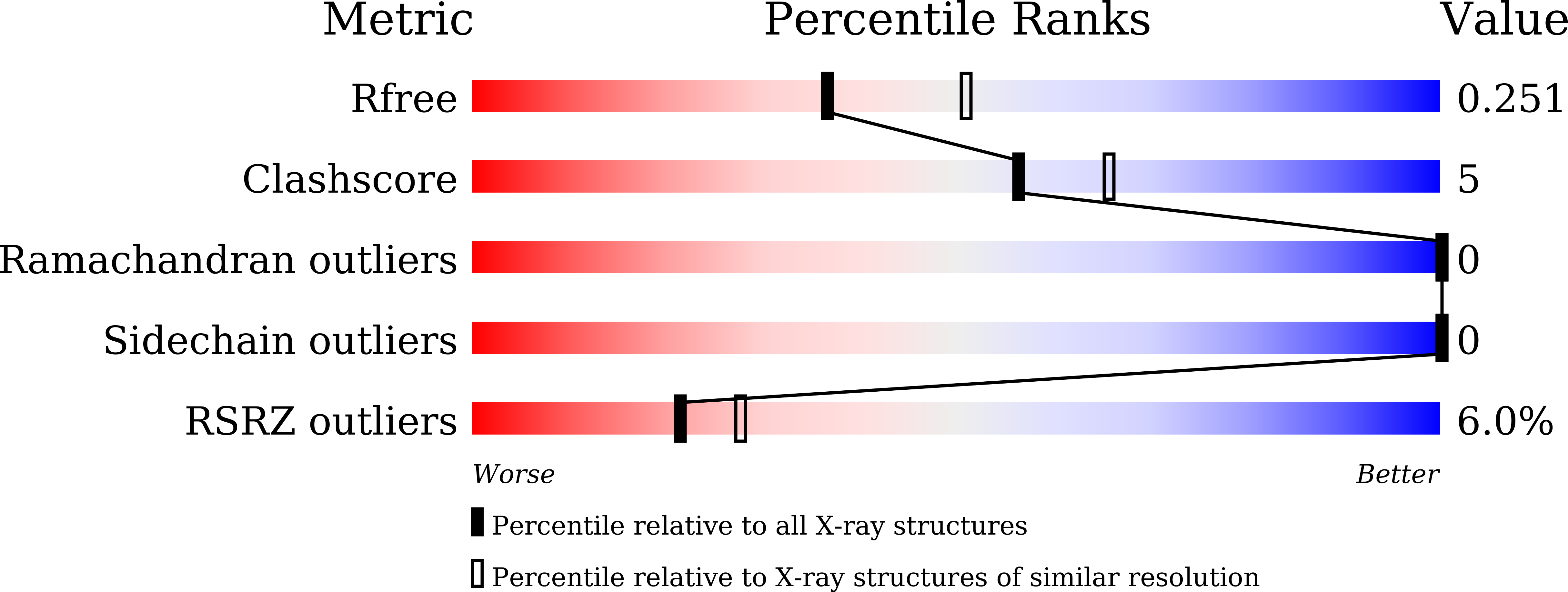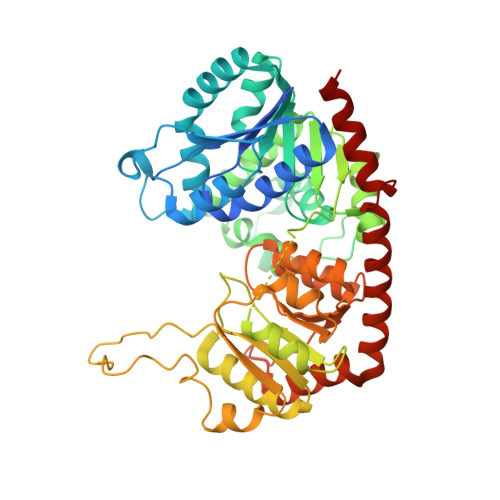An Ambidextrous Polyphenol GlycosyltransferasePaGT2 fromPhytolacca americana.
Maharjan, R., Fukuda, Y., Shimomura, N., Nakayama, T., Okimoto, Y., Kawakami, K., Nakayama, T., Hamada, H., Inoue, T., Ozaki, S.I.(2020) Biochemistry 59: 2551-2561
- PubMed: 32525309
- DOI: https://doi.org/10.1021/acs.biochem.0c00224
- Primary Citation of Related Structures:
6JEL, 6JEM, 6JEN - PubMed Abstract:
The glycosylation of small hydrophobic compounds is catalyzed by uridine diphosphate glycosyltransferases (UGTs). Because glycosylation is an invaluable tool for improving the stability and water solubility of hydrophobic compounds, UGTs have attracted attention for their application in the food, cosmetics, and pharmaceutical industries. However, the ability of UGTs to accept and glycosylate a wide range of substrates is not clearly understood due to the existence of a large number of UGTs. Pa GT2, a UGT from Phytolacca americana , can regioselectively glycosylate piceatannol but has low activity toward other stilbenoids. To elucidate the substrate specificity and catalytic mechanism, we determined the crystal structures of Pa GT2 with and without substrates and performed molecular docking studies. The structures have revealed key residues involved in substrate recognition and suggest the presence of a nonconserved catalytic residue (His81) in addition to the highly conserved catalytic histidine in UGTs (His18). The role of the identified residues in substrate recognition and catalysis is elucidated with the mutational assay. Additionally, the structure-guided mutation of Cys142 to other residues, Ala, Phe, and Gln, allows Pa GT2 to glycosylate resveratrol with high regioselectivity, which is negligibly glycosylated by the wild-type enzyme. These results provide a basis for tailoring an efficient glycosyltransferase.
Organizational Affiliation:
Department of Applied Chemistry, Graduate School of Engineering, Osaka University, Suita, Osaka 565-0871, Japan.














